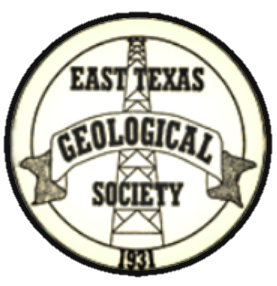DINNER MEETING
Speaker: Richard Denne
Hunter Enis Chair at Texas Christian University
“Massive Cretaceous-Paleogene Boundary Deposit and Initial Incision of the Ancestral DeSoto Canyon: New Evidence for Widespread Chicxulub-induced Slope Failure”
Thursday, November 9, 2017
OCGS Devon Geoscience Center
10 NW 6th Street
OKLAHOMA CITY, OK 73102
5:00pm Networking & Cocktails
6:00pm Dinner
6:30pm Presentation
Member Cost: $30 - Non-member Cost $35
Registrations must be made by
November 3, 2017 at NOON
Abstract:
The Chicxulub bolide impact on the Yucatan Peninsula at the Cretaceous-Paleogene (KPg) boundary has been postulated as the trigger for the end-Cretaceous mass extinction, and caused the collapse of the Yucatan Platform and re-mobilized large quantities of sediment into mass transport flows on the submerged shelf along eastern North and Central America, as well as around the Gulf of Mexico. Well log and biostratigraphic data from over 40 Cretaceous well penetrations in the north-central deep-water GOM show a distinctive calcareous micritic deposit at the KPg boundary, corresponding to the so-called “MCU” seismic horizon. The deposit contains the Cretaceous-Tertiary boundary “cocktail” of Bralower et al. (1998) associated with the Chicxulub impact, and is predominantly composed of graded, pelagic carbonates, similar in composition to age-equivalent sediments found near the Chicxulub Crater, in deep-sea drilling cores, and in outcrops in Cuba. Investigation of seismic data in the north-central GOM shows distinctive sedimentary wedges that exhibit high-amplitude reflections situated at the top of the Cretaceous section. This interval is thought to be the resulting deposit from the mass transport flows and suspension fallout initiated by the impact. Sediment redistribution caused by the Chicxulub impact from the shelf and slope to the deep-water environment filled in available accommodation space around salt highs, as well as deposited sediments on the highs themselves, and altered the seafloor topography. This deposit represents the single largest-known mass wasting deposit, with an average thickness of 10–20 m on the upper slope and 90–200 m on the lower slope and basin floor of the GOM. Underneath the deposit is an unconformity ranging from 9 m.y. to 85 m.y. in extent.
Examination of seismic profiles in the vicinity of the modern DeSoto Canyon indicate that the initial incision of the canyon can be tied to the KPg boundary reflection in nearby industry wells. Initial incision of the canyon is visible on reflection seismic profiles as a series of truncated reflections that outline a canyon-shaped feature on the Upper Cretaceous isochore map. Although much of the early canyon was buried by Cenozoic siliciclastic deposition, it remained a zone of instability, characterized by chaotic seismic facies and common truncation of internal reflections. Smaller than the ancestral canyon, the modern DeSoto Canyon remains within the confines of the initial KPg incision. These findings substantiate widespread slope failure induced by the Chicxulub impact and provide further evidence of a single impact coincident with the KPg mass extinction.
Bio:
Dr. Richard Denne is the founding chair holder of the Hunter Enis Chair in Petroleum Geology at Texas Christian University, a position he has held since 2016. Richard is a graduate of the University of Iowa and received his Ph.D. in geology from Louisiana State University. Richard began his career as a paleontologist at Exxon in 1990. He then consulted with Applied Biostratigraphix before joining Marathon Oil in 2009 as the biostratigraphy subject matter expert. During his career he primarily worked on exploration and production from deep-water basins, including the Gulf of Mexico, West Africa, Brazil, Trinidad, and the North Sea, but he has also worked onshore basins along the Gulf Coast, East Africa, Kurdistan, and North American unconventional shale plays. He has published on biostratigraphy, the effects of the K-Pg boundary Chicxulub impact on the Gulf of Mexico, and Eagle Ford depositional environments. His current research at TCU is focused on organic-rich rocks, especially those from the Cretaceous of Texas and the Eagle Ford / Woodbine system in particular.
To register online the link is: https://www.ocgs.org/events/
To make a reservation email Chelsey cjones@ocgs.org call 405/236.8086 x17

